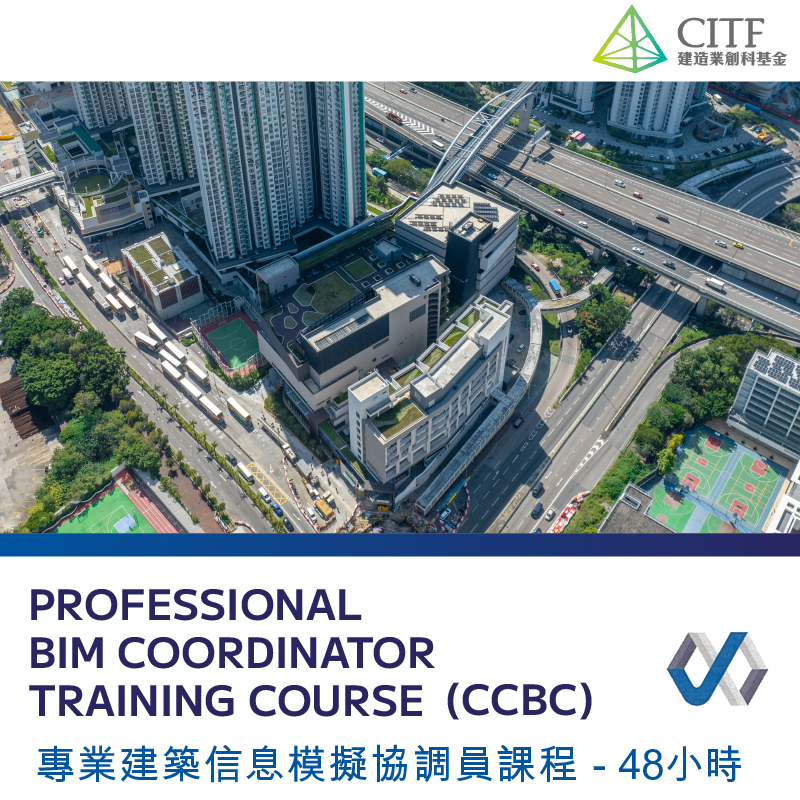Chapter 1 – Introduction to BIM BIM Concept - BIM Definitions & Terminology
- The difference between 2D CAD, 3D CAD and BIM
- Concept of BIM as whole project perspective
- Value and benefits of adopting BIM
- Value of BIM for AM & FM
- Collaborative working in BIM
- Limitation of BIM
- Challenges within existing working practices & how BIM addresses them
- How BIM affects the current practice in AECO industry
Local & Global contexts of BIM standards and guidelines - Local BIM standards & resources. (CIC & Government)
- Global context in BIM development
- Global BIM standards & resources (ISO19650, LOIN, OpenBIM)
Chapter 2 – BIM Software and Technologies BIM Software, Platform and Technologies - Overview of common BIM software
- Characteristics, file formats, strength, and limitations of common BIM software and platform.
- General hardware and software requirements for common BIM software
Technologies - Internet & Cloud.
- Laser scanning & photogrammetry.
- Unmanned Aircraft System (UAS) / Drone
- GIS
- Internet of Things (IoT), mobile or smart devices
- VR/AR/MR.
- RFID.
- VDC.
- Robotics.
- Programming, automation and API.
- MiC, DfMA and MiMEP.
- Indoor positioning.
- Upcoming trend of technology
Chapter 3 - Administration of the BIM projects (Part 1) BIM Uses and Processes - General understanding of the workflows in local construction projects
- BIM strategies, BIM uses, BIM processes.
- Key personnel in relation to BIM and their roles and responsibilities.
- BIM related documents such as Exchange Information Requirements (EIRs), Asset Information Requirements (AIRs), BIM Execution Plan (BEP) throughout the full project life-cycle.
- Applications of various technologies to achieve BIM uses.
Administration of the BIM projects as a project BIM coordinator - Project implementation in line with BEP
- Set up, create and publishing of BIM model following BIM related documents such as BEP or BIM standards.
- Establish and maintain the data structure throughout the BIM processes.
- Administration and maintenance of BIM models in BIM project.
- Monitor overall BIM models work progress.
- Coordination of BIM models with internal and/or other disciplines.
- Maintain BIM models appropriately and compile with BIM documents & standards.
Chapter 4 - Administration of the BIM projects (Part 2) Execution of BIM Uses for single- and multi-disciplinary coordination - Spatial Coordination and 3D Construction Coordination
- Phase Planning (4D Modelling).
- Design review.
- Drawing Production directly from BIM platform.
Assist in BIM related meetings - Meeting with appointing Party
- Meeting with Lead Appointed Party and/or Appointed Parties
- Internal meeting
- Multidiscipline collaboration meeting
- Site co-ordination meeting
Chapter 5 – BIM Quality Control (Part 1) Digital Information Management - Value of data & how it should be managed
- Common data formats and open formats for BIM
- Data exchange of relevant BIM software for single/multiple discipline(s) collaboration
- Limitation of BIM software in relation to information management
- Maintain proper Level of Development (graphics and information) of the dataset
- Establish and maintain data structures or links within the BIM software/platform protocol
- Maintain accurate data set such as templates, standards, libraries, project files, drawings, design specifications and project schedules
Common Data Environment (CDE) - CDE solution and workflow
- Overview of CDE solutions in the market
- Administration and maintenance of CDE, including relevant project information standards and project information management methods and procedures.
- Limitation of CDE.
Chapter 6 – BIM Quality Control (Part 2) Data Quality Control & Assurance - System checking.
- Model audit.
- Model checking including Clash avoidance strategies and Clash detection resolution methodologies
- Audit reporting.
Assessment : Attend at least 43 hours (90%) of the course
Assignment 1 – 10%
Assignment 2 – 10%
Assignment 3 – 10%
Exam – 70%
|










